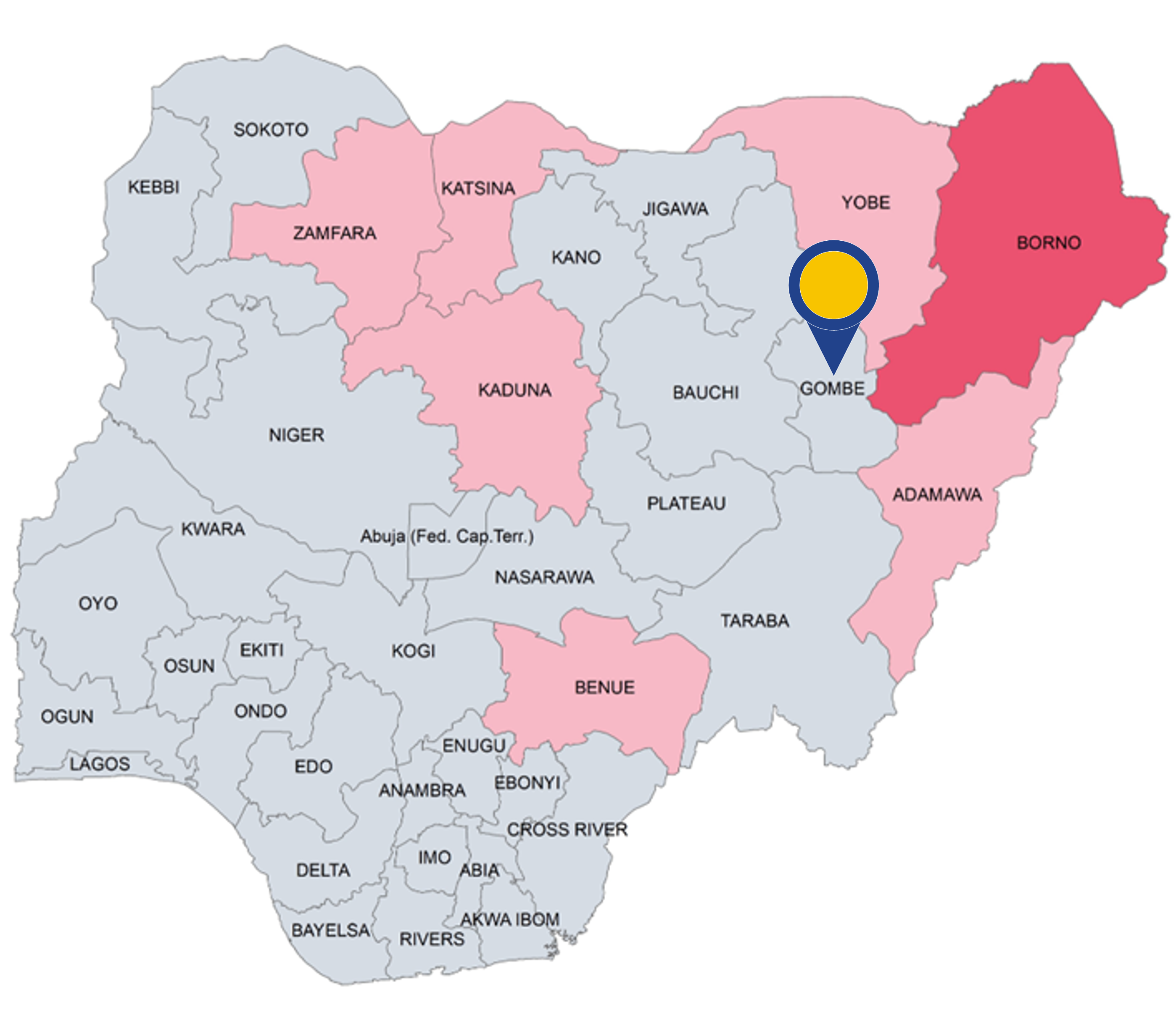Gombe state is composed of 11 LGAs and its capital is Gombe city. The state’s estimated population was 3 256 962 in 2016.

Although Gombe had experienced several Boko Harm attacks in the past (in particular in 2014-2015), in recent years the state did not experience the ‘levels of violent extremism’ noted in other North-East region states. Actors in violent incidents recorded by ACLED in Gombe are ISWAP, local militias, and rioters.
In 2020, fatalities and destruction of houses were recorded during a clash between ISWAP and local militia and during a communal clash between armed militias of ethnic groups.
During 2020, ACLED reported a total of 3 security incidents (1 battles, 1 case of violence against civilians, 1 incidents of riots) in Gombe state (average of 0.1 security incidents per week). Security incidents took place only in the LGA of Gombe.
The abovementioned security incidents resulted in 3 deaths. Compared to the estimated population in the state, this represents less than 1 fatality per 100 000 inhabitants.
From 1 January to 30 April 2021, ACLED reported a total of 3 security incidents (2 battles, 1 incident of riot) in Gombe state (average of 0.2 security incidents per week). These security incidents resulted in 17 deaths.
Of the IDPs in North-East region, 89 % were displaced within their state of origin. The total number of IDPs for Gombe by November 2020 was 39 532. Gombe had the lowest number of IDPs in the North-East region. No specific data were found for Kano state with regard to the number of returnees.
|
|
Looking at the indicators, it can be concluded that in the state of Gombe there is, in general, no real risk for a civilian to be personally affected within the meaning of Article 15(c) QD.
|

